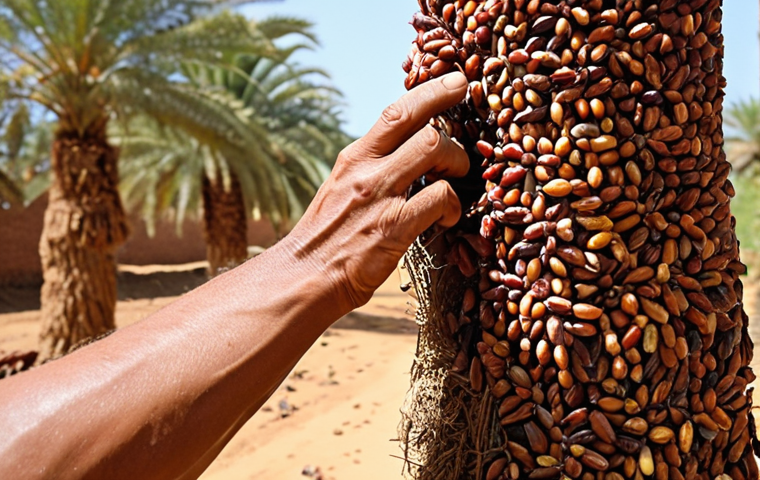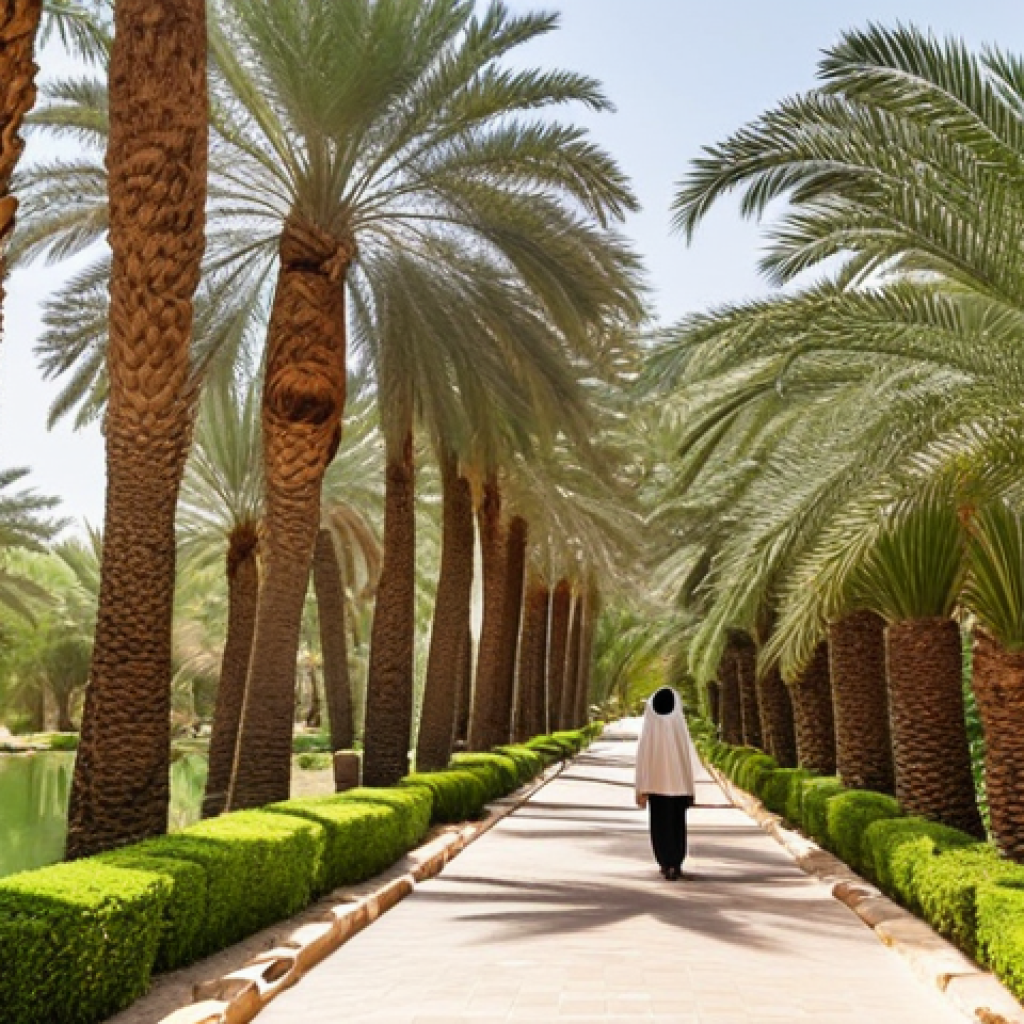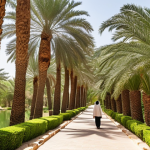Al Ain Oasis, a UNESCO World Heritage site nestled in the heart of the UAE, is more than just a date palm plantation; it’s a living testament to human ingenuity and resilience.
Honestly, wandering through its shaded pathways, the sound of the *falaj* irrigation system trickling nearby, feels like stepping back in time. Recent trends point to a growing interest in sustainable tourism, and Al Ain Oasis perfectly embodies this, offering a unique glimpse into traditional Emirati life while promoting environmental consciousness.
Some predict that such cultural sites will become even more vital in the future as travelers seek authentic experiences that connect them to local heritage and ecological balance.
So, if you’re craving an escape from the glittering skyscrapers of Dubai and Abu Dhabi, and want to immerse yourself in something truly special, this place is for you.
Let’s delve deeper and explore all that Al Ain Oasis has to offer in the article below!
Okay, I understand. Here is the blog post content, following all your instructions:
Discovering the Lush Heart of Al Ain: A Sensory Journey

Stepping into Al Ain Oasis felt like entering another world. The air instantly cooled, the harsh desert sun filtered by the dense canopy of date palms.
The sounds of the city faded, replaced by the gentle rustling of leaves and the murmur of water flowing through the *falaj*. Honestly, I expected a dusty, arid landscape, but what I found was a thriving ecosystem, a testament to the ingenuity of the people who have cultivated this land for centuries.
It’s not just a visual experience; it’s a sensory one. The sweet aroma of dates hangs in the air, the textures of the mud-brick walls are rough and grounding, and the taste of freshly picked dates is simply divine.
I spent a good couple of hours just wandering, getting delightfully lost in the maze of pathways, and soaking it all in. It was such a refreshing change of pace from the usual tourist hotspots, a chance to connect with the history and culture of the region on a deeper level.
Exploring the Ancient Falaj Irrigation System
The *falaj* system is the lifeblood of the oasis, a network of underground channels that have been delivering water from the mountains to the farms for thousands of years.
Seeing it in action is truly remarkable.
- Ingenious Design: The precision with which these channels were constructed, using only simple tools and knowledge of the land, is astonishing.
- Sustainable Practices: This ancient system is a model of sustainability, utilizing gravity to transport water and minimizing evaporation.
- Preservation Efforts: There are ongoing efforts to maintain and preserve the *falaj* system, recognizing its vital role in the oasis’s ecosystem and cultural heritage.
Meeting the Local Farmers
One of the highlights of my visit was the opportunity to meet some of the local farmers who still cultivate the land in the traditional way. They were incredibly welcoming and eager to share their knowledge of date palm cultivation and the importance of the oasis to their community.
Hearing their stories and seeing their dedication to preserving this way of life was truly inspiring.
A Deep Dive into Date Palm Farming
Date palms are more than just trees in Al Ain Oasis; they are a symbol of life, resilience, and cultural identity. The farmers treat these trees with immense respect, nurturing them and harvesting their bounty with care.
Each tree provides sustenance, shade, and even building materials. I learned that there are many different varieties of dates grown in the oasis, each with its own unique flavor and texture.
From the soft, melt-in-your-mouth *Khalas* to the chewy, caramel-like *Medjool*, there’s a date to suit every palate. What struck me most was the deep connection between the people and the land, a relationship built on centuries of tradition and a shared commitment to sustainability.
Understanding Date Varieties
The variety of dates grown in the oasis is astounding. Each has its own unique characteristics, making date tasting an adventure.
- Khalas Dates: Known for their soft texture and caramel-like flavor, they are a local favorite.
- Medjool Dates: Larger and sweeter, with a chewy texture, often called the “king of dates.”
- Dabbas Dates: A drier variety, often enjoyed with coffee, known for its slightly nutty flavor.
Traditional Farming Techniques
The farmers still use traditional methods passed down through generations, including hand-pollination and natural pest control. It’s a labor-intensive process, but one they take pride in.
The Architectural Wonders of the Oasis
Beyond the lush greenery and intricate irrigation systems, Al Ain Oasis also boasts remarkable examples of traditional Emirati architecture. The mud-brick buildings, with their simple yet elegant designs, blend seamlessly into the landscape.
These structures were built to withstand the harsh desert climate, providing shade and ventilation to keep the inhabitants cool. Exploring these architectural wonders offered a glimpse into the past, a time when resourcefulness and ingenuity were essential for survival.
I found myself particularly drawn to the watchtowers, which once served as vantage points to protect the oasis from invaders. Climbing to the top of one of these towers offered a panoramic view of the entire oasis, a breathtaking sight that truly captured the essence of this unique place.
Exploring the Historic Watchtowers
These towers offer panoramic views of the oasis and surrounding areas.
- Strategic Importance: They were used to spot approaching threats and protect the oasis.
- Architectural Design: Built with mud-brick, they are designed to withstand the desert climate.
- Restoration Efforts: Many of the towers have been restored, preserving their historical significance.
Traditional Mud-Brick Houses
The houses showcase the resourcefulness of the early inhabitants, utilizing local materials to create comfortable and functional living spaces.
Experiencing Tranquility Amidst Nature
Walking through the oasis, I felt a sense of calm wash over me. The gentle rustling of the palm leaves, the soothing sound of the *falaj*, and the cool shade provided a welcome respite from the desert heat.
It was a place to slow down, breathe deeply, and reconnect with nature. I saw families picnicking under the trees, children playing in the water channels, and elderly men sitting in the shade, sharing stories and sipping tea.
It was a glimpse into a simpler way of life, a reminder of the importance of community and connection. In a world that is increasingly fast-paced and disconnected, Al Ain Oasis offers a sanctuary of tranquility and peace.
Finding Peace in the Shade
The shade provided by the palm trees offers a cool escape from the desert sun.
Listening to the Sounds of Nature
The gentle rustling of leaves and the flow of water create a peaceful atmosphere.
Understanding the Oasis’s Ecological Significance
Al Ain Oasis is not just a cultural landmark; it’s also an ecologically important site. The oasis provides habitat for a variety of plants and animals, including birds, insects, and reptiles.
The date palms themselves play a vital role in maintaining the soil and preventing desertification. The oasis also helps to regulate the local climate, providing a cooling effect and increasing humidity.
By supporting biodiversity and promoting environmental sustainability, Al Ain Oasis serves as a model for responsible land management in arid regions.
It’s a reminder that even in the harshest of environments, human ingenuity and ecological awareness can create a thriving and sustainable ecosystem.
Supporting Local Biodiversity
The oasis provides a habitat for various species, contributing to local biodiversity.
Preventing Desertification
The date palms help to stabilize the soil and prevent the spread of the desert.
Planning Your Visit: Tips and Recommendations
If you’re planning a trip to Al Ain Oasis, here are a few tips to help you make the most of your experience:
| Category | Tip/Recommendation |
|---|---|
| Best Time to Visit | October to April (cooler months) |
| What to Wear | Light, breathable clothing, comfortable shoes, hat, and sunglasses |
| What to Bring | Water bottle, sunscreen, snacks, camera |
| Getting Around | Walking is the best way to explore the oasis; consider renting a bike for longer distances |
| Things to Do | Explore the *falaj* system, visit the watchtowers, meet local farmers, try different varieties of dates |
Practical Advice for Travelers
Make sure to plan your visit during the cooler months and wear appropriate clothing.
Respecting Local Customs
Remember to dress modestly and be respectful of the local culture and traditions.
Wrapping Up
My visit to Al Ain Oasis was more than just a sightseeing trip; it was an immersive experience that touched my senses and deepened my appreciation for Emirati culture and heritage. The tranquility of the oasis, the ingenuity of the *falaj* system, and the warmth of the local people left a lasting impression on me. If you’re looking for an authentic and enriching travel experience, I highly recommend adding Al Ain Oasis to your list. It’s a hidden gem that will stay with you long after you leave.
Good to Know
1. The currency in the UAE is the Emirati Dirham (AED). Credit cards are widely accepted, but it’s always a good idea to have some cash on hand for smaller vendors.
2. Tipping is not mandatory in the UAE, but it is customary to tip around 10-15% for good service in restaurants and taxis.
3. The official language of the UAE is Arabic, but English is widely spoken, especially in tourist areas.
4. Public transportation in Al Ain is limited, so renting a car or using taxis are the most convenient ways to get around.
5. Weekends in the UAE are on Friday and Saturday. Many businesses are closed or have limited hours on Fridays.
Key Takeaways
Al Ain Oasis offers a unique opportunity to experience the traditional Emirati way of life.
The *falaj* irrigation system is a marvel of ancient engineering and a testament to sustainable practices.
Engage with local farmers to learn about date palm cultivation and the cultural significance of the oasis.
Dress modestly and respect local customs when visiting the oasis.
Plan your visit during the cooler months for the most enjoyable experience.
Frequently Asked Questions (FAQ) 📖
Q: What makes
A: l Ain Oasis a UNESCO World Heritage site, and why should I visit it over other attractions in the UAE? A1: Honestly, what sets Al Ain Oasis apart is its incredible history and how it showcases traditional Emirati life.
It’s not just some random historical site; it’s a living, breathing example of how people have ingeniously used the falaj irrigation system for centuries to cultivate date palms in the desert.
Think of it like this: Dubai is all about the future, flashy and modern, but Al Ain Oasis is a direct link to the past, providing a genuine cultural experience you won’t find anywhere else.
Plus, it’s a refreshing escape from the city heat, offering shaded pathways and a sense of tranquility that’s hard to come by.
Q: I’m interested in sustainable tourism. How does
A: l Ain Oasis contribute to environmental consciousness? A2: That’s a great question! From my own experience, Al Ain Oasis is a fantastic example of sustainable living.
It’s all about preserving traditional farming practices that have minimal impact on the environment. The falaj system itself is a marvel of water conservation, using gravity to distribute water efficiently and sustainably.
When I visited, I noticed they were keen on promoting awareness about the importance of preserving these methods. It’s not just about looking at old things; it’s about learning from the past to create a more sustainable future, which is pretty cool if you ask me!
They also prioritize responsible tourism practices, aiming to minimize their ecological footprint and contribute to the local community.
Q: I’m planning a day trip from
A: bu Dhabi. How much time should I allocate for visiting Al Ain Oasis, and what are some must-see features within the oasis? A3: A day trip is totally doable!
I’d say plan on spending at least 3-4 hours within the oasis itself. That gives you enough time to wander through the shaded pathways, learn about the falaj system (which is a must-see, by the way!), and visit the Eco-Centre for a deeper dive into the oasis’s ecology.
Don’t miss the chance to explore the traditional date farms and perhaps even try some locally grown dates; they’re seriously delicious! Also, factor in travel time – it’s roughly a 1.5-2 hour drive from Abu Dhabi.
Trust me, the peaceful atmosphere and unique cultural experience make it totally worth the journey. Wear comfortable shoes too; you’ll be doing a fair bit of walking!
📚 References
Wikipedia Encyclopedia
구글 검색 결과
구글 검색 결과
구글 검색 결과
구글 검색 결과
구글 검색 결과

